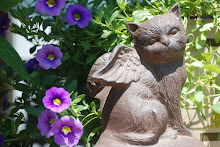uch like the long period of time it takes the Oak to grow in size, likewise it can take up to 60 years for one to mature and produce its first full crop of fruit. During the April and May, pale green leaves on small stocks start to appear. If by chance Old Man Winter refuses to leave and dallies in his departure leaving a few cold mornings behind, the Oak has the ability to re-leaf itself again. In August as summer comes into full bloom and most trees and plants are dealing with the intense heat, the Oak begins to produce a new set of leaves known as “Lammas Shoots.” The Lammas Shoot is golden pink in color when they first begin. As they grow and harden, they take on a darker green color. As autumn comes the Oak tree seems to be at its best. The leaves change color once again, turning to shades of yellow, orange, russet, and golden brown. The leaves frequently stay on continuously through winter even after drying and turning brown. They finally fall off the following spring or when the new buds form and eventually push them off.
As the leaves return in April, the flower of the oak begins to form; growing in clusters of male and female catkins. By May the male catkins have grown anywhere from one to three inches long and filled with pollen. It is this time when the female catkins open as upright flowers awaiting to be pollinated. Each catkin will eventually produce the fruit of the Oak, known as the acorn. The acorn ripens in autumn where it changes from a green to a pale yellow then eventually a dark brown. The acorn drops from the tree as it ripens. If not eaten by one of the many animals which find the delicious, it will sprout and eventually form a tree itself.
Yuletide is the time when the Oak King takes over from the Holly King. The Yule Log is traditionally made of Oak. It is also the host for mistletoe which grows high in the Oaks branches. When decorating the Yule Log, sprigs from Mistletoe and Holly are used.
The Yule log is never entirely burned. A small portion is kept until the next year. It is burned along with the new Yule Log symbolizing the ending of the old and the beginning of the new. The unburned portion of the Yule log is kept in the home throughout the year to protect it.
The Oak, as well as the Yule log symbolize the Green Man, the spirit of vegetation. The ashes from the Yule fire were scattered outside to fertilize the fields and bring abundance to the next year’s crop.







2 comments:
I remember the first time I saw an Oak in the Spring and thought it was dead, because of all the dead leaves on it. I had no idea they held on so long.
A truly magical tree!
And in classical mythology was a symbol of Zeus and his sacred tree, too.
Post a Comment